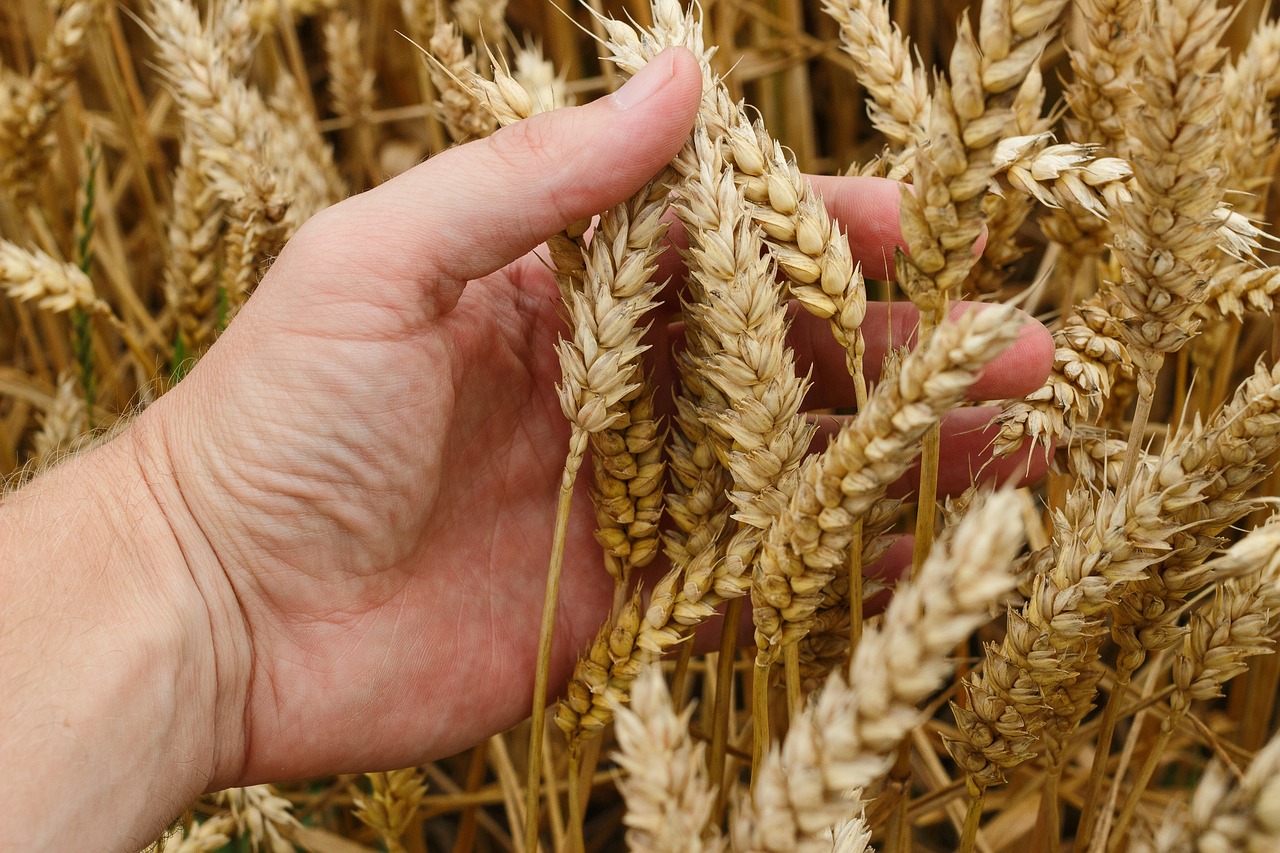Missouri S&T awarded $1.25 million for agricultural workforce development
Missouri S&T awarded $1.25 million for agricultural workforce ... Missouri S&T News and Research


The United States Federal Government Addresses Workforce Shortages in Food, Agriculture, and Natural Resources Industries

The United States federal government anticipates significant workforce shortages soon for the food, agriculture, and natural resources industries, and faculty members from Missouri S&T are part of a nationwide effort to address the issue.
From Learning to Leading: Cultivating the Next Generation of Diverse Food and Agriculture Professionals
Over the next five years, Missouri S&T is expected to receive $1.25 million from the National Institute of Food and Agriculture’s program titled “From Learning to Leading: Cultivating the Next Generation of Diverse Food and Agriculture Professionals.”
The total amount provided to all participating universities for this program will be $262.5 million, with the Inflation Reduction Act of 2022 serving as the funding source. The funds S&T will receive come from the $10 million awarded to Lincoln University in Jefferson City, Missouri. Lincoln University is leading a consortium of institutions focused on the issue.
Initiatives to Address Workforce Shortages
Dr. Hu Yang, S&T’s principal investigator for the project, says S&T’s grant was officially awarded this summer, and he expects several initiatives to launch soon.
“It is vital that several universities come together and work to train and inspire the next generation of agricultural workers,” says Yang, S&T’s Doshi Endowed Chair of Chemical and Biochemical Engineering. “We look forward to working with underrepresented populations and helping them develop the skills and experiences necessary to keep the workforce running and thriving in the future.”
Focus Areas for the Project
Yang says S&T will have multiple focus areas for the project, including:
- Precision agriculture, which uses information technology to help manage crops.
- Nanomaterial technology applications in precision agriculture, including data analytics for optimal resource utilization in farming.
- The use of drones for precision agriculture, taught through a hybrid course combining online and fieldwork.
- Carbon capture and sequestration, with a focus on its impact on farming.
Outreach Activities and Support
The university will also host several outreach activities to train potential students and recruit them for S&T’s degree programs. These activities will include workshops, funding for students’ courses and research, internships, and experiential learning opportunities.
“Missouri S&T has always been a leader in workforce development, and we are happy to provide our expertise and resources to support such an important federal initiative,” says Yang.
Collaborators and Partners
Yang’s co-PIs at Missouri S&T are:
- Dr. Honglan Shi, research professor emeritus of chemistry
- Dr. Paul Nam, associate professor of chemistry
- Dr. Katherine Grote, associate professor of geological engineering
- Dr. Jeremy Maurer, assistant professor of geological engineering
- Dr. Fateme Rezaei, Doshi Professor of Chemical and Biochemical Engineering
Central State University and Texas A&M are also partner institutions for the project.
About Missouri S&T
Missouri University of Science and Technology (Missouri S&T) is a STEM-focused research university of over 7,000 students located in Rolla, Missouri. Part of the four-campus University of Missouri System, Missouri S&T offers over 100 degrees in 40 areas of study and is among the nation’s top public universities for salary impact, according to the Wall Street Journal. For more information about Missouri S&T, visit www.mst.edu.
SDGs, Targets, and Indicators
| SDGs | Targets | Indicators |
|---|---|---|
| SDG 4: Quality Education | 4.3: By 2030, ensure equal access for all women and men to affordable and quality technical, vocational, and tertiary education, including university | The article mentions that Missouri S&T will provide workshops, internships, and experiential learning opportunities to train potential students and recruit them for S&T’s degree programs. |
| SDG 8: Decent Work and Economic Growth | 8.6: By 2020, substantially reduce the proportion of youth not in employment, education or training | The article highlights the workforce shortages in the food, agriculture, and natural resources industries, and the efforts to train and inspire the next generation of agricultural workers. |
| SDG 9: Industry, Innovation, and Infrastructure | 9.5: Enhance scientific research, upgrade the technological capabilities of industrial sectors in all countries, in particular developing countries, including, by 2030, encouraging innovation and substantially increasing the number of research and development workers per 1 million people and public and private research and development spending | The article mentions that Missouri S&T will focus on precision agriculture, nanomaterial technology applications in precision agriculture, and carbon capture and sequestration. These areas involve scientific research and technological advancements. |
| SDG 13: Climate Action | 13.2: Integrate climate change measures into national policies, strategies, and planning | The article states that Missouri S&T is considered a national leader in carbon capture and sequestration, and students can learn how it affects farming. |
Analysis
1. Which SDGs are addressed or connected to the issues highlighted in the article?
The SDGs addressed or connected to the issues highlighted in the article are SDG 4: Quality Education, SDG 8: Decent Work and Economic Growth, SDG 9: Industry, Innovation, and Infrastructure, and SDG 13: Climate Action.
2. What specific targets under those SDGs can be identified based on the article’s content?
Based on the article’s content, the specific targets that can be identified are:
– Target 4.3: By 2030, ensure equal access for all women and men to affordable and quality technical, vocational, and tertiary education, including university.
– Target 8.6: By 2020, substantially reduce the proportion of youth not in employment, education or training.
– Target 9.5: Enhance scientific research, upgrade the technological capabilities of industrial sectors in all countries, in particular developing countries, including, by 2030, encouraging innovation and substantially increasing the number of research and development workers per 1 million people and public and private research and development spending.
– Target 13.2: Integrate climate change measures into national policies, strategies, and planning.
3. Are there any indicators mentioned or implied in the article that can be used to measure progress towards the identified targets?
Yes, there are indicators mentioned or implied in the article that can be used to measure progress towards the identified targets. These indicators include:
– The provision of workshops, internships, and experiential learning opportunities to train potential students and recruit them for S&T’s degree programs (related to Target 4.3).
– Efforts to train and inspire the next generation of agricultural workers to address workforce shortages (related to Target 8.6).
– Focus on precision agriculture, nanomaterial technology applications in precision agriculture, and carbon capture and sequestration (related to Target 9.5).
– Missouri S&T’s expertise and resources in carbon capture and sequestration and its impact on farming (related to Target 13.2).
Overall, these indicators can be used to measure progress towards the identified targets by assessing the access to quality education, reduction in youth unemployment, advancements in scientific research and technological capabilities, and integration of climate change measures into policies and planning.
SDGs, Targets, and Indicators
| SDGs | Targets | Indicators |
|---|---|---|
| SDG 4: Quality Education | 4.3: By 2030, ensure equal access for all women and men to affordable and quality technical, vocational, and tertiary education, including university | The provision of workshops, internships, and experiential learning opportunities to train potential students and recruit them for S&T’s degree programs |
| SDG 8: Decent Work and Economic Growth | 8.6: By 2020, substantially reduce the proportion of youth not in employment, education or training | Efforts to train and inspire the next generation of agricultural workers to address workforce shortages |
| SDG 9: Industry, Innovation, and Infrastructure | 9.5: Enhance scientific research, upgrade the technological capabilities of industrial sectors in all countries, in particular developing countries, including, by 2030, encouraging innovation and substantially increasing the number of research and development workers per 1 million people and public and private research and development spending | Focus on precision agriculture, nanomaterial technology applications in precision agriculture, and carbon capture and sequestration |
| SDG 13: Climate Action | 13.2: Integrate climate change measures into national policies, strategies, and planning | Missouri S&T’s expertise and resources in carbon capture and sequestration and its impact on farming |
Behold! This splendid article springs forth from the wellspring of knowledge, shaped by a wondrous proprietary AI technology that delved into a vast ocean of data, illuminating the path towards the Sustainable Development Goals. Remember that all rights are reserved by SDG Investors LLC, empowering us to champion progress together.
Source: news.mst.edu

Join us, as fellow seekers of change, on a transformative journey at https://sdgtalks.ai/welcome, where you can become a member and actively contribute to shaping a brighter future.







